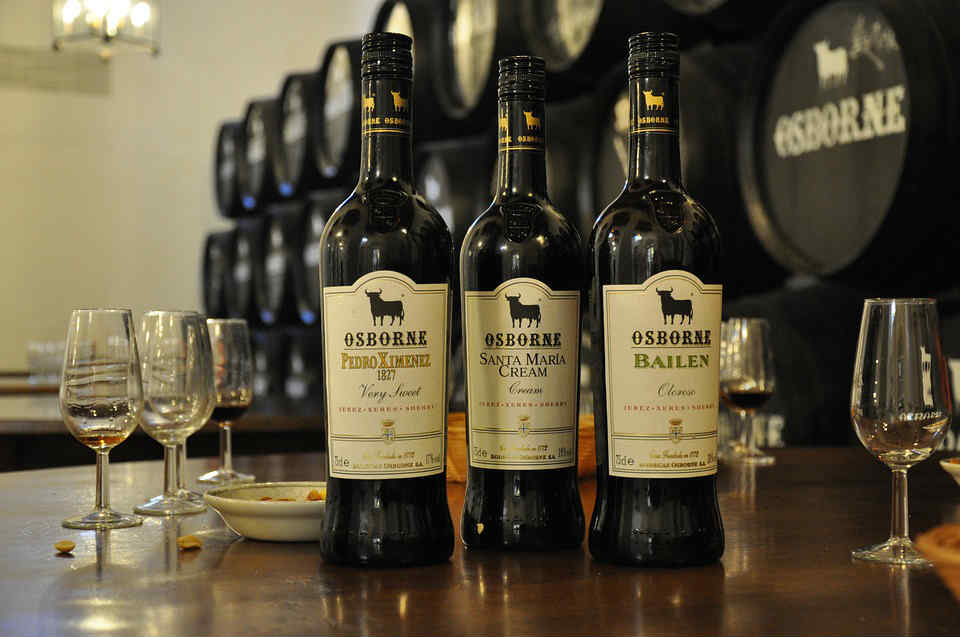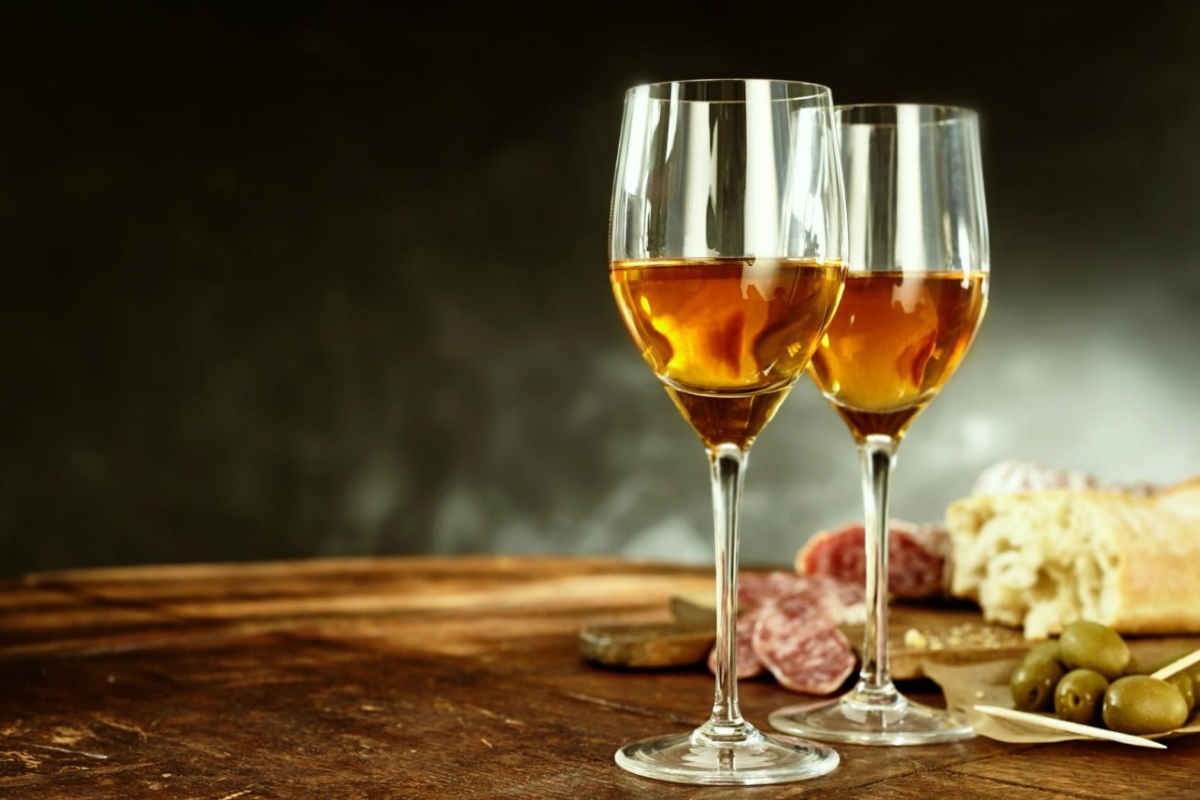Sherry is a type of fortified wine made from white grapes grown in a designated part of Spain. According to Spanish law, sherry can only be made from palomino, Pedro Ximénez or moscatel grapes grown in “The Sherry Triangle,” found within the southernmost province of Cádiz, Andalusia.
Sherry—or as it’s known in its homeland, Jerez—is fortified with brandy after fermentation. The alcohol-by-volume (ABV) that a sherry is fortified to depends on the type of sherry it is destined to become: Future Finos and Manzanillas get tuned up to 15 percent, while Olorosos-in-waiting hit the 17 percent mark.
Fortification allows a key part of the sherry-making process to occur: flor, which means “flower” in Spanish. It is a thin layer of yeast that spreads over the surface of the fortified wine to prevent oxidation during the aging process.
If the sherry has been fortified to 15 percent, the flor will survive the entire aging process. This is known as “biological aging.” If the sherry has been fortified to 17 percent, the flor will die during the process and allow oxidation to occur. This latter method is called “oxidative aging,” and is used to make Oloroso sherry.
After fortification, the wine will be transferred to wooden casks commonly called sherry butts for aging. Sherry must be aged for a minimum of two years, but may be aged longer based on style. Sherry undergoing biological aging is always solera-aged, meaning that sherry of different ages are blended together to maintain a consistent flavor profile. Sherry undergoing oxidative aging is sometimes, but not always, solera-aged.
Now, here are some basics, should you find yourself at a strange cocktail party where people quiz you on sherry.

A trio of Osborne Sherries.
Sherry Basics
- Sherry must be made in designated parts of Spain’s Cádiz province.
- Sherry must be made from palomino, muscatel, or Pedro Ximénez grapes.
- Sherry is fortified with brandy to an alcohol content of either 15 or 17 percent, depending on type.
- Sherry is aged for a minimum of two years.
Types of Sherry
Spanish law divides sherry into three camps: dry sherry, naturally sweet sherry, and sweet sherry.
Dry Sherry
Dry sherry cannot exceed a sugar content of five grams per liter, and is produced using flor. Dry sherries include:
- Manzanilla sherry is made from palomino grapes and produced in the town of Sanlúcar De Barrameda. Manzanilla is fortified to 15 percent ABV and undergoes biological aging.
- Fino is made from palomino grapes and produced in the towns of Jerez de la Frontera and El Puerto de Santa María. Fino is fortified to 15 percent ABV and undergoes biological aging.
- Amontillado is made from palomino gapes and undergoes both biological and oxidative aging.
- Oloroso is made from palomino grapes. It is fortified to 17 percent ABV and undergoes oxidative aging.
- Palo cortado is initially fortified to 15 percent ABV and begins as a biologically aged sherry. Depending on certain flavor characteristics that emerge during aging, tasters may mark the barrel for further fortification to 17 percent to produce a palo cortado.
Naturally Sweet Sherry
Naturally sweet sherry is made from overly ripe or sun-dried grapes. Unlike dry sherry, naturally sweet sherry is fortified after fermentation has begun and is oxidized as it ages. Types include:
- Moscatel is made from moscatel grapes that can be, but are not always, sun-dried.
- Pedro Ximénez is made from Pedro Ximénez grapes that have been sun-dried to create a higher concentration of sugars.
Sweet Sherry
Sweet sherry is a sort of missing link between the other two categories. It’s made by blending dry sherry with naturally sweet sherry or “concentrated must,” a grape-based natural sweetener. Sweet sherry must have a sugar content of five grams per liter or more. Types include:
- Pale cream sherry is made by blending Fino or Manzanilla sherry with concentrated must.
- Medium sherry is a broad category that may include any sweet sherry between five grams of sugar per liter and 115 grams of sugar per liter.
- Cream sherry is made by blending a dry sherry, often Oloroso or Amontillado, with a naturally sweet sherry, often Pedro Ximénez, or a concentrated must.
How to Use Sherry
Any sherry, particularly sweet or naturally sweet sherry, can be enjoyed neat. But there’s a long history of using sherry in cocktails, stretching back to 19th century classics like the Sherry Cobbler, the Bamboo, the Adonis and the Tuxedo. Mix one up (or mix them all up) any time you want a delicious, easygoing drink. The first three are low in alcohol, so can be enjoyed pretty much whenever, while the Tuxedo is a boozier affair—basically a riff on the Martini—that makes a fine nightcap.



